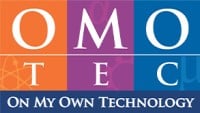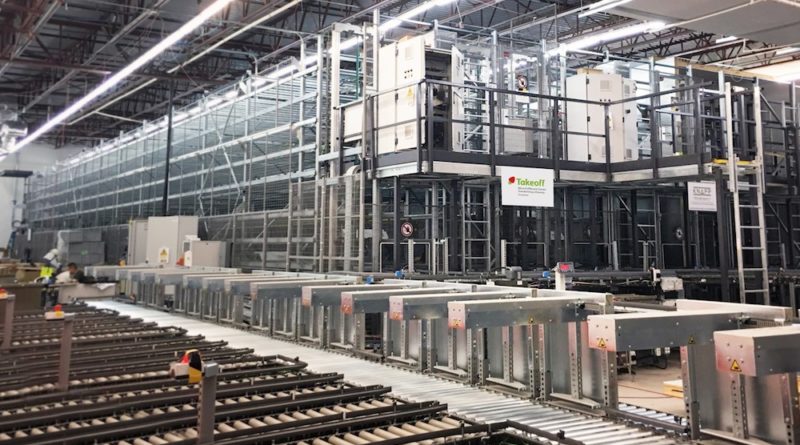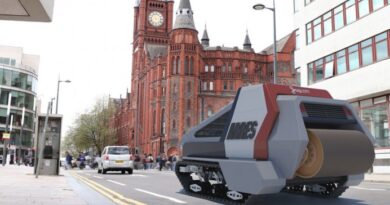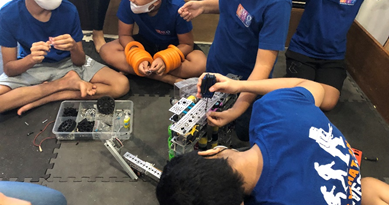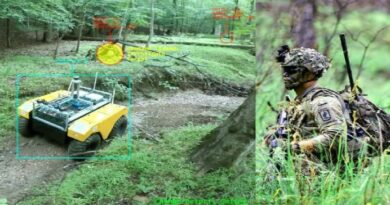Takeoff Technologies developing grocery micro fulfillment market
The novel coronavirus pandemic has slowed demand for industrial automation in manufacturing, but it has also accelerated change in retail. One example is the growth of micro fulfillment centers, which offer efficiencies for e-commerce and groceries. Automation can reduce last-mile delivery costs and provide flexibility for growth, according to Takeoff Technologies Inc.
“We coined the term micro fulfillment in 2016,” said José Vicente Aguerrevere, co-founder and CEO of Takeoff Technologies. “We wanted to build a superior automation system to picking, packing, and transportation done by the grocery shopper.”
“The difference between us and hardware players is that we understand the economics of the $5.7 trillion grocery business,” he told The Robot Report. “There’s a picture in our office of our main competitor — a shelf in a supermarket. Self-service was invented 100 years ago. It’s not about over-designing automation but about using the automation required to have a viable and scalable business case.”
“On the hardware side, Takeoff has partnered with KNAPP to preassemble facilities to deploy worldwide,” said Aguerrevere. “We provide an end-to-end platform, including a user interface for inventory management, picking, routing, and delivery. Out of our staff of 250, 210 are in product/software development in 22 Scrum teams.”
“Retail customers don’t need to bring anything to the equation, and the WCS [warehouse control system] runs the basics for inventory, which we then integrate with customers’ systems,” he said. “For example, we work with Woolworths, the largest supermarket chain in Australia. We hook up to its supply-chain module and don’t change its way of replenishing a store.”
“An Amazon or a Walmart can buy one robot and deploy it end to end, but our target includes large chains such as Ahold, Carrefour, or Safeway,” Aguerrevere said. “There are $30 billion to $100 billion businesses that can’t do it themselves.”
“We have a lot of respect for Fabric and Attabotics, but we have a very different go to market,” he noted. “Takeoff Technologies is similar to Ocado or AutoStore in that the value resides in end-to-end platforms. Kroger could have bought robots directly, but it went to Ocado. However, Ocado has large, centralized facilities, while we leverage proximity.”
“We also compete with Instacart, which is hyperlocal but not yet automated. We’re both automated and hyperlocal, with pick rates 10 times that of Instacart,” said Aguerrevere. “We’re opening a new micro fulfillment center practically every other week across North America, Europe, and Australia. In the U.S., we’re working with Albertsons, Big Y, and Wakefern, as well as many others.”
“There is massive pent-up demand for automation,” he said. “With 10,000 facilities worldwide, we want to keep a laser focus on groceries and smaller facilities.”
“The store of the future will be one without shelves,” Aguerrevere predicted. “Not all categories are the same — people need to buy toilet paper and cereal on a regular basis, but they also have the desire to explore. Stores of the future will allow people to interact and get inspiration, and then their orders will be efficiently assembled and delivered by automation.”
“Grocery shopping could be more like going to the Apple Store, with staffers advising on what’s for dinner,” he said. “By decoupling exploration and decision making from fulfillment from the shelf, we can be like Alibaba for grocery with Amazon’s cashier-less retail.”
